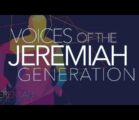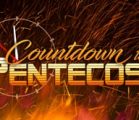
Pentecostal Explorations of the New Testament
The Nature and Purpose of the New Testament
Reflection Paper 1
Unit 1
Steve Wright
Pentecostal Explorations of the New Testament
September 16, 2014
Unity and diversity are near and dear to my heart. As a pastor, both unity and diversity represent a significant role in all I teach, preach and live out. Therefore, with great regard, Dr. Thomas’s lecture was both encouraging and engaging. Unity is important in order to be a focused community of Christ-followers, advancing the redemptive story of scripture. Unity holds us together. Diversity is no less important, and is critically needed to share the beauty of different perspectives. Each of us, matchlessly created in His image, has a distinguished point of view to offer.
In my assessment and reflection, The Canon of the New Testament affirms unity and diversity throughout. The New Testament is a collection of documents as Dr. Thomas notes in his lecture, “…that begins with the story of the Jewish Messiah and ends with the vision of the new heavens and a new earth with Jesus enthroned in the New Jerusalem.”[1] In between the bookends of the beginning story of Jesus and heaven and earth coming together, unity and diversity are reflected by the early church and continues to move the church forward.
A closed canon demonstrates unity. We have the gospel’s, epistles, commentary and even sermons, which magnifies the foundation of our unity as followers of Jesus. We have in the New Testament Canon, a rule or measurement that keeps us in unity because books cannot be removed, and books cannot be added. Since we believe the books to be inspired by God, they become authoritative and thus keep us unified around a complete God-breathed text. To paraphrase Dr. Thomas “They shared convictions that in Jesus all of humankind have shared the fullest revelation of who God is and his offer of salvation.”[2]
Before I reflect some on the diversity found in the New Testament, I would like to mention a few more harmony descriptions that points clearly to unity. In his lecture, Dr. Thomas deals with the origins of Jesus that are found in the entire gospel accounts. For example, “Despite their differences something about Jesus’ origins are found in all four gospels.”[3] Among the list, the following are a few unity features given by Dr. Thomas.
- Jesus’ relationship to John the Baptist
- Jesus’ understanding of God
- Jesus’ anointing by the Spirit
- Jesus’ followers
- Jesus’ ministry of word and deed
- Jesus’ passion (betrayal, trial and death)
- Jesus’ resurrection[4]
In the early Christian movement, holistic agreement can be seen in how the new church functioned around the bible as part of the service. Dr. Thomas notes that the reading of the Bible had, “Its place in worship”[5] and cited Col 4:16 and 1 Thes 5:27. The early church also seemed to be in agreement in the attempt to get to the true picture of the historical Jesus.
Variances in early Christian expression can be noted in worship. Paraphrasing Dr. Thomas, in his teaching he notes, “The early church had unity around Jesus as Savior and diversity around the way in which people worshipped.”[6] For example, Dr. Thomas makes the observation, “…in the book of Acts Steven says of the temple, since Jesus has come, the temple is not needed- so you can tear it down. James, on the other hand, continues to go to the temple and is part of the worship there.”[7]
Diversity can also be seen in the New Testament account through the different writers. Just like any good story told by an author, their viewpoint is expressed. We should not be afraid of a particular viewpoint because that is the power of diversity at work. In his book, Four Gospels, One Jesus?: A symbolic reading, Richard Burridge writes, “Four pictures, all different-each with its own story evoking its own atmosphere and provoking its own response in the viewer-yet all are one and the same man.”[8] I love the way this quote from the writings of Burridge connects with the thoughts Dr. Thomas put forth in his lecture. For example, Dr. Thomas notes, “While the Gospels tells the life of Jesus they are not identical replicas of each other. Each Gospel tells the story of Jesus from a different perspective. We should not make the mistake of approaching the Gospels as a book of information about Jesus without understanding of the different perspectives.”[9]
Moving forward with my reflection thoughts, I turn now to the subject of inspiration of the Scripture. In John 16:13 the Bible teaches us that He, The Holy Spirit, will guide the Christ-follower into all truth. This Scripture in particular, but not exclusively, is the foundation for my Pentecostal understanding of the inspiration of the New Testament. However, I must add the addendum that the work of The Spirit, in and through the Word of God did not just start in the New Testament. 2 Timothy 3:16 teaches us that Scripture is indeed inspired by God’s will; therefore, the Old Testament is not void of the same conclusion. Dr. Thomas’s well notes, “…the biblical writer states that the Old Testament prophecies were not the result of human imagination but the result of the Holy Spirit’s activity.”[10] Scripture is indeed, divinely inspired.
It would be less involved and a scapegoat to stop at this point with a blanket statement that the Word of God is divinely inspired without wrapping it in human flesh and just leave it at that. However, I am compelled to go much farther, though I must admit I have much to learn about the inspiration of Scripture. I am fascinated with God becoming flesh, and how God The Father used Jesus, “The Word,” to live among us. I wonder; does God use human flesh to reveal himself through us also? Did He use the writers of the New Testament as unique individuals? My conviction is God did use them distinctively and can use us distinctively as well.
I found it exciting when I found an echo of my own conviction that God uniquely used the diversity of each New Testament writer. I concur with Dr. Thomas as he contends, “A proper definition of inspiration must be sensitive to the various ways in which individuals were inspired to write the documents that make up the Bible. Surprisingly enough, God did not choose to inspire everyone in an identical fashion.”[11]
There is much I hope to better grasp as we move through this course concerning the New Testament as it relates to how God uses human flesh to write. I look forward to learning how to retain a high view of the New Testament Scripture, while at the same time learning what it means to see God use human vessels for His glory without reducing or diminishing the sovereign work of The Spirit. I love what Dr. Thomas notes when he writes, “There is a tendency among some of the radical proponents of inspiration to reduce the role of the Holy Spirit to the pages of Scripture itself-in effect, placing God in a box. Pentecostals must continue to insist that the ministry of the Holy Spirit cannot be reduced to His role in the inspiration of Scripture.”[12]
[1]. Thomas, Dr.Chris. “The Nature and Purpose of The New Testament” (Video Lecture), accessed September 1, 2014, https://www.youtube.com/watch?v=2lJ3Y_fuiUc
[2] Thomas, Dr.Chris. “The Nature and Purpose of The New Testament” (Video Lecture), accessed September 1, 2014, https://www.youtube.com/watch?v=2lJ3Y_fuiUc
[3] Thomas, Dr.Chris. “The Nature and Purpose of The New Testament” (Video Lecture), accessed September 1, 2014, https://www.youtube.com/watch?v=2lJ3Y_fuiUc
[4] Thomas, Dr.Chris. “The Nature and Purpose of The New Testament” (Video Lecture), accessed September 1, 2014, https://www.youtube.com/watch?v=2lJ3Y_fuiUc
[5] Thomas, Dr.Chris. “The Nature and Purpose of The New Testament” (Video Lecture), accessed September 1, 2014, https://www.youtube.com/watch?v=2lJ3Y_fuiUc
[6] Thomas, Dr.Chris. “The Nature and Purpose of The New Testament” (Video Lecture), accessed September 1, 2014, https://www.youtube.com/watch?v=2lJ3Y_fuiUc
[7] Thomas, Dr.Chris. “The Nature and Purpose of The New Testament” (Video Lecture), accessed September 1, 2014, https://www.youtube.com/watch?v=2lJ3Y_fuiUc
[8] Burridge, Richard A. “Four Gospels, One Jesus?: A Symbolic Reading” Wm. B. Eerdmans Publishing Co.; 2 edition (September 21, 2005) Kindle Chapter 1, Location 331
[9] Thomas, Dr.Chris. “The Nature and Purpose of The New Testament” (Video Lecture), accessed September 1, 2014, https://www.youtube.com/watch?v=2lJ3Y_fuiUc
[10] Thomas, Dr.Chris. “Ministry & Theology: Studies for the Church and its Leader” Pathway Press (May 1996) Page 15
[11] Thomas, Dr.Chris. “Ministry & Theology: Studies for the Church and its Leader” Pathway Press (May 1996) Page 16
[12] Thomas, Dr.Chris. “Ministry & Theology: Studies for the Church and its Leader” Pathway Press (May 1996) Page 19

